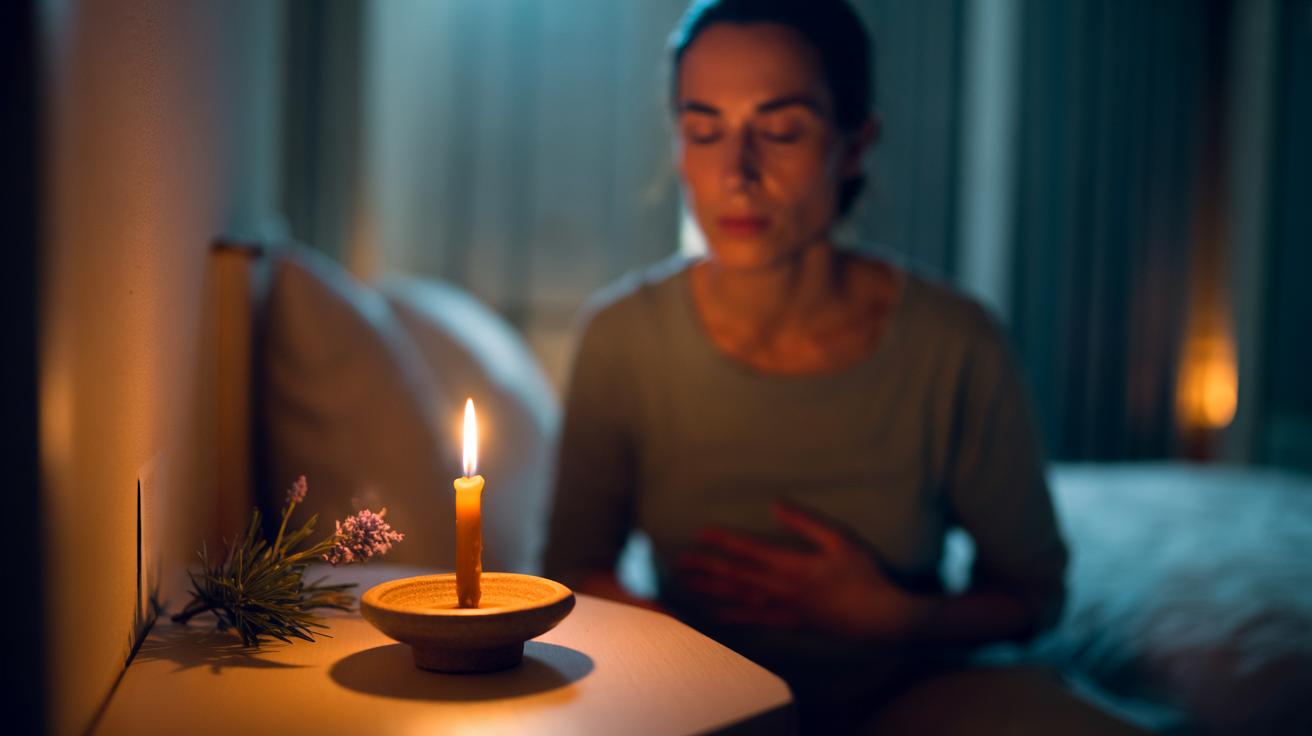In a nutshell
- 🔥 Paired cues: Link a steady candle flame and consistent scent with paced breathing to condition calm via the olfactory–limbic route, activating the parasympathetic system and lowering evening stress.
- 🌬️ Breathing cadence: Aim for ~6 breaths per minute with a longer exhale (e.g., 4–0–6–0) to improve heart-rate variability and ease muscle tension without strain.
- ⏰ Consistency over duration: A fixed 10–15 minute nightly slot, same spot, and phones away reduces decision fatigue and strengthens the relaxation association; repeatability is key.
- 🕯️ Scents and safety: Choose beeswax or light lavender/bergamot, ventilate if sensitive, trim the wick, and never leave the candle unattended; place it at eye level on a heatproof surface.
- 🧭 Track and adapt: Log stress ratings and time-to-sleep, and use a travel-friendly LED candle if needed—keep the breathing script identical because small, reliable cues beat willpower.
After long days that blend emails, commuting, and household admin, evenings can feel compressed and noisy. A simple candle-and-breath ritual offers a quiet, repeatable boundary between work and rest. By pairing the steady glow of a flame with slow, paced breathing, you teach your nervous system to recognise a cue for evening stress release. This is not mysticism; it’s practical psychology applied to bedtime. When the same sensory signals arrive at the same time, the body starts to anticipate calm before you even begin. With a minute of preparation and ten minutes of practice, the ritual becomes a compact, portable tool for decompressing on demand.
Why Paired Cues Calm a Busy Brain
The power of the ritual lies in paired cues. Through gentle classical conditioning, the sight and scent of a candle become linked to the rhythm of your breath. The olfactory pathway routes directly to the limbic system, where memory and emotion sit, so consistent fragrance plus slow exhalation can nudge the parasympathetic branch into play. Many people settle around six breaths per minute: a paced inhale, a longer exhale, and no strain. The effect is measurable in heart-rate variability, warmth in the hands, and that subtle loosening of forehead and jaw.
There’s a second win: predictability. A brief, reliable ritual reduces the load of decision-making, which often spikes tension at night. The brain, hearing the same match scratch, seeing the same flame, anticipates safety. Repetition wires expectation; expectation softens threat. Over a week or two, the cues shorten the runway into stillness. The result isn’t sedation but readiness for rest: a quieter mind, easier transitions, and fewer late-night spirals.
How to Build the Candle-and-Breath Routine
Choose a time window you can defend—say, 9.30 to 9.45pm—and one spot: a chair by the window, a bedside table, or the kitchen counter after the washing-up. Dim overheads. Place the candle at eye level and arm’s length, on a stable, heatproof surface. Strike the match, take a normal breath, then begin paced breathing: inhale for four seconds, exhale for six. Keep your gaze soft on the flame. Aim for 10 minutes. If you prefer structure, try “4-0-6-0”: no breath holds, just smooth, unforced tides of air.
Consistency trumps duration. Before you start, park your phone in another room or switch to flight mode to protect the association. Trim the wick to about 5mm to keep the flame steady; never leave it unattended. Sensitive to smoke? Use a long lighter to avoid sulphur odour, or swap to a clean-burning soy or beeswax tealight. Make the sensory script exact: the same light, the same smell, the same breath—night after night. In a fortnight, the cues will do the heavy lifting for you.
Scents, Safety, and Small Experiments
Keep scent selective. A mild lavender or bergamot candle is a classic, but many prefer unscented beeswax to avoid overwhelm. Reserve the fragrance strictly for this ritual so the brain tags it as a relaxation marker. If you’re prone to headaches or asthma, ventilate gently or go unscented; the visual cue of the flame still works. Track outcomes lightly: rate your stress from 0 to 10 before and after, or note time-to-sleep and night-time wake-ups. Patterns usually emerge within 7–10 sessions.
| Element | Action | Rationale | Tip |
|---|---|---|---|
| Candle cue | Use beeswax or light lavender | Stable flame and scent anchor calm | Reserve only for the ritual |
| Breathing cadence | ~6 breaths per minute | Boosts vagal tone, eases arousal | Exhale slightly longer than inhale |
| Timing | 10–15 minutes nightly | Repetition builds the association | Set a gentle timer out of sight |
| Environment | Lights low, screens off | Reduces competing stimuli | Put phone on flight mode |
| Contingency | LED candle or diffuser | For travel or scent sensitivity | Keep the breathing script identical |
Iterate without fuss. Some nights you’ll add a soft track of sea noise, others a warm hand on the belly to follow the breath. Travelling? Pack a small tin candle or a flicker LED and keep the cadence the same. Small, reliable cues beat willpower every time. The aim is not perfection but repeatability—a ritual simple enough to practise when you’re tired, and consistent enough that your body recognises it as a doorway to ease.
The candle-and-breath ritual works because it’s tangible, memorable, and kind to a restless brain. By linking a gentle flame to a paced exhale, you create a nightly shorthand for safety and recovery, one that resists the noise of late emails and endless scrolling. In a month, the match strike may be all you need to feel tension drop a notch. When cues become companions, rest becomes easier to reach. What scent, setting, and breathing cadence will you choose to craft your own evening signal for calm?
Did you like it?4.5/5 (29)
